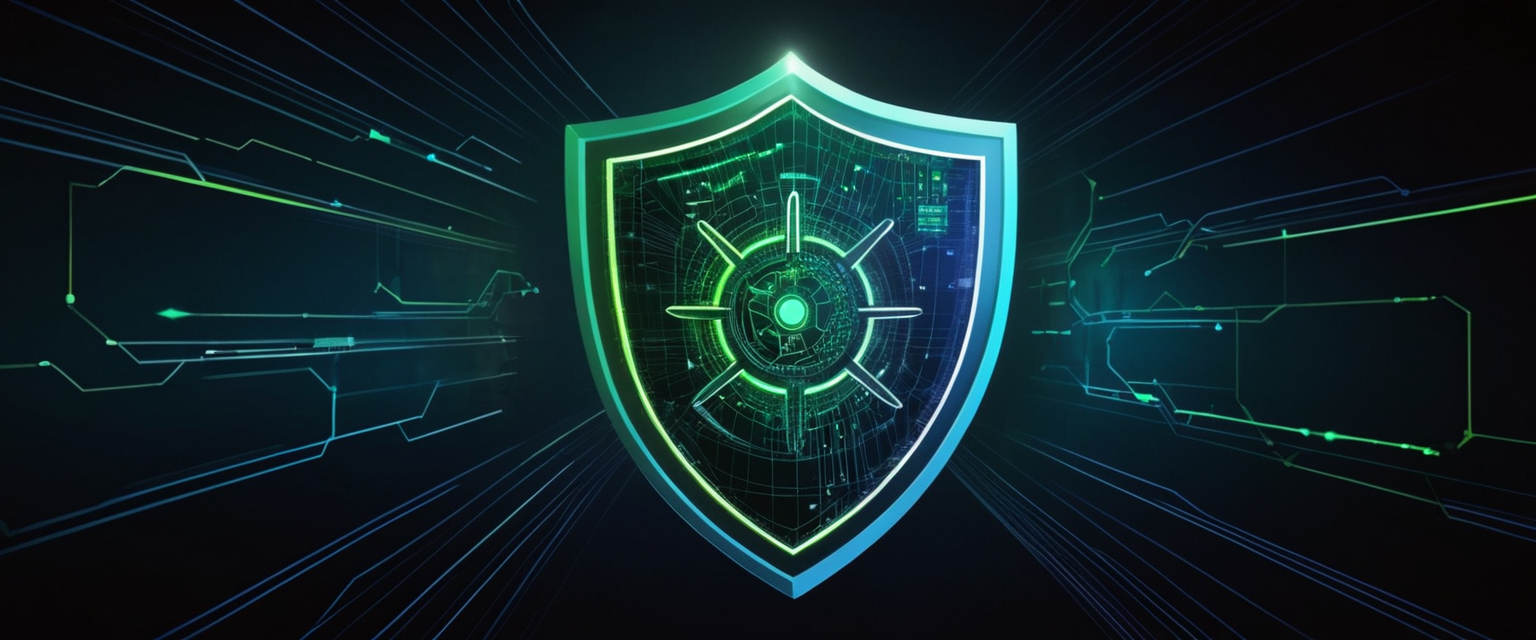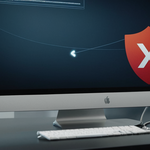
McAfee antivirus software represents one of the most widely distributed security solutions globally, often pre-installed on new computers or available through various subscription models. Users encounter situations requiring the temporary or permanent disabling of McAfee protection for legitimate reasons including software installation, system troubleshooting, compatibility testing, and migration to alternative security solutions. This comprehensive report examines the multifaceted approaches to disabling McAfee antivirus across various platforms and scenarios, providing detailed guidance on temporary suspension of real-time scanning protection, systematic component disabling, complete software uninstallation, and advanced removal techniques for stubborn installations. The primary methods for disabling McAfee involve accessing the application’s protection settings to turn off real-time scanning for specified durations, utilizing Windows built-in uninstall procedures, employing the official McAfee Consumer Product Removal tool for comprehensive removal, and in advanced cases, manually managing registry entries and system services. This report synthesizes information from official support documentation, expert community forums, and technical guides to provide users with authoritative, step-by-step procedures while addressing the security implications and best practices associated with temporarily or permanently removing antivirus protection.
Understanding McAfee Antivirus and the Reasons for Disabling It
McAfee antivirus software functions as a comprehensive security solution designed to protect computers from malware, viruses, and other digital threats through continuous monitoring and real-time scanning capabilities. The software suite typically includes multiple protective components including real-time virus scanning, firewall protection, web advisor functionality, automatic updates, and scheduled scanning features that operate independently or in concert with one another. Understanding the architecture of McAfee protection systems becomes essential for users seeking to disable specific components without compromising overall security or remove the software entirely for system optimization purposes.
Users encounter legitimate reasons for disabling McAfee antivirus temporarily or permanently that extend beyond simple user preference. Software installation processes occasionally encounter conflicts with active antivirus protection, particularly when installing system utilities, device drivers, or specialized applications that interact closely with system-level components. System troubleshooting workflows frequently require temporarily disabling real-time protection to isolate whether security software causes performance degradation, system instability, or software compatibility issues. Additionally, users migrating from McAfee to alternative antivirus solutions such as Windows Defender, Norton 360, or Bitdefender must disable and uninstall existing protection before installing competing solutions to prevent conflicts and ensure proper functionality of the new security platform.
The decision to disable McAfee protection carries security implications requiring careful consideration and planning. Windows security alerts emphasize that disabling antivirus protection leaves a computer exposed to threats, and operating systems explicitly warn users about unprotected status when antivirus software becomes inactive. Industry best practices recommend maintaining continuous antivirus protection except during specific maintenance windows, ensuring alternative protection mechanisms remain active during any period when primary antivirus solutions are disabled, and restoring protection as quickly as possible after completing the task necessitating protection suspension. Users should never leave their systems completely unprotected; if uninstalling McAfee in favor of an alternative, that alternative should be downloaded and activated before removing McAfee entirely.
Temporary Disabling of Real-Time Scanning on Windows Systems
The most straightforward method for temporarily disabling McAfee antivirus involves accessing the application’s built-in controls to suspend real-time scanning protection without removing the software entirely. This approach proves ideal for situations requiring brief protection suspension, such as installing software that conflicts with active scanning or conducting quick system diagnostics. The temporary disabling method preserves the McAfee installation and allows users to automatically or manually resume protection after completing their required tasks, making it particularly suitable for troubleshooting scenarios where users anticipate needing antivirus protection again quickly.
To temporarily disable McAfee real-time scanning on Windows systems running Windows 10 or Windows 11, users should begin by launching the McAfee application with administrator privileges. The process initiates by searching for McAfee using the Windows search function and selecting the application from search results, then right-clicking and choosing “Run as administrator” to grant necessary system permissions. Once the McAfee application window opens, users navigate to the protection controls through the main menu, typically located in the upper left corner of the application interface where three horizontal lines appear, often referred to as the “hamburger menu”. Clicking this menu icon reveals navigation options, and users should select “My Protection” or similar terminology depending on their specific McAfee version to access the primary protection status page.
Within the My Protection section, the real-time scanning option appears prominently, displaying the current status of active virus scanning and threat protection. Users observe a “Turn Off” button or similar control adjacent to the real-time scanning status indicator. Clicking the turn-off button initiates a dialog box presenting timing options for protection suspension, allowing users to specify precisely how long McAfee should remain disabled before automatically resuming protection. The standard timing options typically include fifteen-minute intervals (15 minutes, 30 minutes, 45 minutes, 60 minutes), automatic resumption upon computer restart, or a “Never” option that maintains disabled status until the user manually reactivates protection. Most users seeking brief protection suspension select the fifteen or thirty-minute duration option, confirming their selection and completing the temporary disabling process.
The Windows operating system responds to disabled antivirus protection with security notifications, typically appearing through Windows Security alerts that encourage users to reactivate protection. These notifications serve informational purposes rather than blocking functionality; users may proceed with their required tasks while receiving these notifications. The temporary disabling status remains visible within the McAfee application interface, displaying “Protection Off” or similar language to remind users that active antivirus protection is currently suspended. When the selected time interval expires, McAfee automatically resumes real-time scanning protection without requiring user intervention, returning the system to protected status. Users may also manually resume protection at any time by returning to the My Protection section, clicking the real-time scanning option, and selecting the “Turn On” button to immediately restore full antivirus protection.

Disabling Additional McAfee Components and Support Features
Beyond disabling real-time scanning, McAfee security suites typically include multiple protective components operating independently, and comprehensive protection suspension requires disabling each component individually. The firewall protection feature represents a second critical component that many users must disable alongside real-time scanning, particularly when installing software that requires unrestricted network access or troubleshooting connectivity issues. Accessing the firewall controls follows a similar process to real-time scanning disabling; users open the McAfee application, navigate to protection settings, and locate the firewall or advanced firewall option. The firewall settings page presents similar timing options to real-time scanning, allowing users to specify suspension duration before automatic resumption.
McAfee Total Protection and LiveSafe products include additional protective features requiring individual attention when comprehensive disabling is necessary. Automatic updates functionality may require disabling to prevent the software from automatically updating during troubleshooting scenarios that might introduce version conflicts. Scheduled scan features, which run automated virus scans at preset times, should be disabled to prevent automatic scanning from interfering with installation or troubleshooting processes. The process for disabling these additional features varies slightly depending on McAfee version and product tier, but generally involves accessing settings pages through the main menu, locating the specific feature, and clicking disable or off controls. For comprehensive disabling across all components, users should systematically move through My Protection settings, identifying each active protection feature and disabling it according to their specific needs and the duration for which protection suspension is required.
McAfee WebAdvisor and Site Advisor features, which provide browser-based security ratings and web filtering, operate independently from the main antivirus engine and may require separate disabling. These browser extensions function across multiple web browsers including Chrome, Firefox, Edge, and Safari, providing real-time website safety ratings and blocking access to potentially dangerous sites. Users encountering website access issues or browser compatibility problems may need to disable these extensions separately through browser settings or the McAfee application. For Windows users, disabling WebAdvisor typically involves accessing the McAfee application settings, locating the Site Advisor or WebAdvisor section, and selecting the disable option. Browser extension management offers an alternative method; users can disable the extension through their browser’s extension management interface without fully removing McAfee protection from the system.
Complete Uninstallation Methods for Windows Systems
Users seeking to permanently remove McAfee antivirus from their Windows systems employ several distinct methodologies depending on the success of each approach and the thoroughness of removal desired. The standard Windows uninstallation process through Control Panel or Settings application represents the initial removal method recommended by McAfee support and represents the first step in comprehensive removal procedures. This approach accesses the system’s installed applications list, locates McAfee, and initiates the removal process through Windows’ native uninstallation wizard. The standard method often succeeds for straightforward removals but frequently leaves behind residual files, registry entries, and system processes that continue consuming system resources and potentially interfering with alternative antivirus installations.
To execute the standard Windows uninstallation process on Windows 10 and Windows 11 systems, users begin by opening Windows Settings through the Start menu or by pressing Windows key plus I. Within Settings, users navigate to “Apps” and then select “Apps & Features” or “Installed Apps” depending on their Windows version. Within this list of installed applications, users search for “McAfee” by typing in the search field, revealing all McAfee products currently installed on the system. For each McAfee product appearing in the list, users click the three-dot menu icon adjacent to the product name and select “Uninstall” from the resulting context menu. Windows then presents an uninstall confirmation dialog, and users click “Uninstall” again to proceed with removal. The uninstallation wizard may request administrative credentials, which users must provide to authorize the removal process. During uninstallation, users may receive prompts asking whether to remove program settings and data; selecting affirmative responses ensures more thorough removal of McAfee-related configuration.
The McAfee Consumer Product Removal tool, commonly abbreviated as MCPR, represents the official and more powerful removal method recommended by McAfee support for situations where standard uninstallation fails or leaves behind residual components. This specialized removal utility surpasses the capabilities of Windows’ built-in uninstall process by targeting deeper system integration points, registry entries, and system services that standard uninstallation leaves behind. McAfee explicitly recommends downloading the latest version of the MCPR tool before attempting use, emphasizing that the tool is regularly updated to handle new product versions and should never be stored and reused from prior downloads. Users can obtain the MCPR tool from McAfee’s official support website or from MajorGeeks at download link sources that specifically provide McAfee removal tools.
To employ the MCPR tool effectively, users should first close all active applications and save any open files, as the removal process may require system restart during execution. The removal process begins with downloading the latest MCPR.exe file to an accessible location on the computer, such as the Downloads folder or Desktop. Users then navigate to the downloaded file location and double-click the MCPR.exe file to launch the removal wizard. When the User Account Control dialog appears requesting permission to run the tool, users click “Yes” to authorize execution. The McAfee Software Removal screen appears, and users click “Next” to proceed with the removal process. At the End User License Agreement dialog, users click “Next” to accept the terms and continue. The tool then requests security validation in the form of captcha information, requiring users to type characters displayed on screen to verify they are human operators rather than automated scripts attempting mass removals.
The MCPR tool subsequently identifies McAfee products and services on the system and begins removal processing. If the system includes McAfee Family Protection, users may receive prompts requesting administrator credentials to complete family protection removal. The removal process may require several minutes to complete as the tool systematically removes McAfee components, system services, and registry entries. Upon successful completion, users see a “Cleanup Successful” message and are prompted to restart the computer to complete the removal process. The restart is essential; McAfee components will not be fully removed until after the system restarts and completes final cleanup operations. After restart, users should verify that McAfee has been completely removed by opening Settings and confirming that no McAfee products appear in the installed applications list.
Advanced removal scenarios occasionally arise where even the MCPR tool fails to completely remove McAfee products, typically due to registry corruption, system file locks, or deeply embedded system services. In these challenging situations, a multi-step approach combining system recovery modes with MCPR execution often proves successful. The advanced removal process begins by disabling Early Launch Anti-Malware (ELAM) protection in the Windows boot process, which can interfere with complete McAfee removal. Users open Windows Settings, navigate to “System” and then “Recovery,” and click “Restart Now” under Advanced Startup options. After selecting “Troubleshoot” at the recovery screen, users proceed to “Startup Settings” and select “Disable early launch anti-malware protection,” then restart the computer. With ELAM disabled, running the MCPR tool often succeeds in removing deeply embedded McAfee components that previously resisted removal attempts.
If the MCPR tool continues failing even after disabling ELAM, manual registry editing becomes necessary as a final remediation step. This advanced technique involves opening the Windows Registry Editor (regedit) and manually deleting the McAfee registry keys responsible for maintaining McAfee configuration and system integration. Users access the Registry Editor by pressing Windows key plus R, typing “regedit,” and clicking Enter. Within the Registry Editor, users navigate to HKEY_LOCAL_MACHINE\SOFTWARE\MCAFEE and attempt to delete this registry key and all subkeys containing McAfee configuration information. This manual deletion may fail if the registry key remains locked by a system service; in such cases, users must identify and disable any remaining McAfee services in the Windows Services application before attempting registry deletion. While effective, manual registry editing carries risks if performed incorrectly; users should back up their registry before attempting manual edits and should only proceed if other removal methods have definitively failed.

Disabling and Uninstalling McAfee on macOS Systems
MacOS users encounter slightly different procedures for disabling and uninstalling McAfee products compared to Windows users, reflecting differences in macOS architecture and application management systems. To temporarily disable McAfee on macOS systems, users locate the McAfee icon in the menu bar at the top right of the screen, typically displaying a white and red shield logo. Clicking this menulet reveals options for accessing the McAfee console or preferences. Selecting the option to open the Total Protection Console, LiveSafe interface, or product name depending on the specific McAfee product installed, users access the main protection interface. Within this interface, users navigate to settings or preferences, often accessible through a gear icon or settings option, to locate real-time scanning controls.
Within the macOS McAfee interface, users click the lock icon to enable editing of protection settings, which typically requires entering administrator credentials. Disabling real-time scanning involves accessing the Real-Time Scanning section and clicking the toggle switch to disable this protection component. Similar to Windows versions, macOS McAfee presents timing options allowing users to specify how long protection should remain disabled; users select their preferred duration and confirm the change. Additional protection components including firewall, automatic updates, and scheduled scans can be disabled through similar processes, each requiring access to the respective settings section and toggling the enable/disable switch.
For complete uninstallation of McAfee on macOS, users must follow several steps to ensure complete removal rather than leaving behind residual files and settings. The process begins with closing the McAfee application and disabling the firewall through the preferences interface to ensure nothing remains protecting the McAfee installation during removal. Users then access the Applications folder through the Finder and locate the McAfee application. Some McAfee products may be fully removed through standard application deletion (dragging to Trash), but more complete removal often requires additional steps. Users should open Activity Monitor to verify no McAfee processes continue running in the background; if any McAfee processes appear, users should select each and click the force quit button to terminate these processes.
For more thorough macOS removal, users can employ terminal commands if they possess command-line comfort and understanding. Different McAfee versions use different uninstall scripts; users with McAfee version 4.8 would execute “sudo /Library/McAfee/cma/uninstall.sh” while version 5.x users would execute “sudo /Library/McAfee/cma/scripts/uninstall.sh” in the terminal, then provide their administrator password when prompted. After any uninstallation method completes, users should restart their Mac and verify complete removal by confirming no McAfee processes appear in Activity Monitor and no McAfee preferences files remain in the Library directory. Third-party cleaning applications like App Cleaner & Uninstaller can assist in identifying and removing remaining McAfee-related files that manual processes may have missed.
Advanced Removal Techniques and Troubleshooting Common Installation Issues
Users frequently encounter stubborn McAfee installations that resist standard and even MCPR tool removal attempts, requiring creative troubleshooting to achieve complete removal. When the MCPR tool reports that existing McAfee installations prevent its execution, the tool specifically requests users remove McAfee through standard Windows uninstallation processes first. If the Windows uninstallation process fails or freezes when attempting to remove McAfee, attempting the uninstallation process in Safe Mode sometimes succeeds by reducing system processes and conflicts. To boot into Safe Mode, users hold the Shift key and click Restart in Windows, then select “Troubleshoot” followed by “Startup Settings,” and press 5 to enter Safe Mode with networking.
Registry corruption represents another common source of McAfee removal failure, particularly when users have attempted multiple removal procedures without complete success. When users encounter error messages stating “The system cannot find the specified file” or similar registry access errors, the registry may contain corrupted McAfee references preventing standard removal tools from accessing and removing necessary registry entries. In these situations, opening Command Prompt as Administrator and executing the command “reg delete HKEY_LOCAL_MACHINE\SOFTWARE\MCAFEE /f” may clear the corrupted registry entries. This command line approach bypasses the graphical registry editor limitations and may succeed where manual registry editing in regedit fails. If this command also fails, attempting the same process in Safe Mode occasionally proves successful by allowing the system to release locked registry keys preventing normal deletion.
McAfee processes remaining in Task Manager or Services after uninstallation represents another common issue where residual services prevent complete removal. Users should open Task Manager by pressing Ctrl+Shift+Esc and examining the Processes tab for any McAfee-related processes, which they should terminate by right-clicking and selecting “End Task”. In the Services application, accessible by pressing Windows+R, typing “services.msc,” and clicking OK, users should search for any McAfee-related services, which should be disabled or deleted. If Services shows McAfee entries that cannot be deleted through the graphical interface, command line commands like “sc delete [service_name]” may succeed, where users replace [service_name] with the actual McAfee service name obtained from the Services interface.
Registry entries representing another source of persistent McAfee remnants sometimes appear as ghosted entries in the Windows registry even after apparent complete removal. After exhausting standard removal attempts, navigating to HKEY_LOCAL_MACHINE\SOFTWARE\ in the Registry Editor and searching for any remaining “MCAFEE” entries allows manual deletion of these residual registry keys. Safe Mode boot process sometimes enables successful deletion of registry keys that resist deletion in normal Windows operation mode. Users should proceed cautiously with registry editing, remembering that incorrectly modifying the registry can render the system unbootable; users unfamiliar with registry editing should consider contacting professional technical support or Microsoft support directly for assistance with advanced registry modifications.

Security Considerations and Best Practices During Antivirus Removal
Disabling or removing antivirus protection leaves systems vulnerable to malware infection and cyber attacks, making careful planning and timing essential components of the removal process. Users should never disable all antivirus protection and leave systems running without replacement protection, even temporarily. Windows systems include built-in Windows Defender antivirus that automatically activates when third-party antivirus solutions are disabled or removed. When switching from McAfee to alternative antivirus solutions, users should download and install the replacement antivirus before completely removing McAfee, ideally operating a brief period with both antivirus solutions active before uninstalling McAfee. While running multiple antivirus solutions simultaneously requires caution due to potential conflicts, most modern antivirus solutions can operate alongside each other for brief periods without causing system instability.
Users should disable McAfee antivirus only during specific maintenance windows when internet connectivity can be minimized and the system risk of infection is reduced. Critical times to maintain active antivirus protection include during online banking, email access, web browsing of unknown websites, or downloading files from untrusted sources. If temporary disabling becomes necessary during these activities, the duration should be minimized to the absolute minimum required to complete the necessary task. After completing the task requiring protection suspension, users should immediately resume antivirus protection by reactivating the disabled feature or uninstalling McAfee’s replacement antivirus as quickly as possible.
Users frequently encounter fake McAfee notifications and pop-ups while uninstalling or after removal, as malicious adware attempts to trick users into clicking malicious links or downloading infected software by impersonating legitimate McAfee alerts. Genuine McAfee notifications should be distinguished from fake alerts by examining grammar and spelling, verifying logos appear correct and high-quality, confirming links lead to legitimate McAfee domains, and checking whether alerts mention other antivirus companies or services. Fake alerts commonly feature urgent language demanding immediate action, poor grammar and spelling errors, low-quality or distorted graphics, and suspicious links leading to phishing or malware distribution sites. Users should never enter login credentials into pop-up alerts, click links in unsolicited notifications, or call phone numbers appearing in suspicious pop-ups, as these represent standard social engineering tactics designed to compromise security and facilitate financial fraud.
Ensuring McAfee is Off: Final Steps
The process of disabling or removing McAfee antivirus software encompasses multiple methodologies ranging from simple temporary protection suspension to complex manual registry modifications, requiring careful selection of the appropriate approach based on specific circumstances and desired outcomes. Temporary disabling of real-time scanning through the McAfee application interface serves users requiring brief protection suspension during software installation or system troubleshooting, providing rapid suspension and resumption capabilities without removing the software or risking uncontrolled system exposure. Users migrating from McAfee to alternative security solutions should employ the official MCPR tool as the primary removal method, supplemented by manual registry cleaning if necessary, ensuring complete removal that will not interfere with alternative antivirus installation and operation.
Planning and preparation significantly enhance removal success; users should download the latest MCPR tool before attempting removal, save and close all active applications, disconnect from the internet when possible to minimize security risks during unprotected periods, and verify alternative antivirus installation and activation before beginning McAfee removal. If standard removal methods fail, users should progress systematically through advanced techniques including Safe Mode uninstallation, ELAM disabling, and manual registry editing rather than abandoning removal efforts prematurely. Throughout the removal process, users should prioritize maintaining active antivirus protection by installing alternative solutions before removing McAfee completely, never leaving systems unprotected even temporarily unless absolutely necessary for installation or troubleshooting procedures.
For users experiencing persistent removal failures or uncertain about technical procedures, professional technical support from Microsoft, McAfee support directly, or qualified computer technicians provides valuable assistance that prevents accidental system damage from incorrect registry modifications or command-line operations. The decision to disable or remove McAfee antivirus should follow careful consideration of whether alternatives exist and advance planning to minimize system vulnerability during transition periods. Ultimately, maintaining active antivirus protection represents a non-negotiable requirement for system security in modern computing environments; temporary disabling should remain brief, targeted, and followed immediately by resumption of protection, while permanent removal should include advance installation of replacement antivirus solutions ensuring systems maintain continuous protective coverage during and after the transition process.
Protect Your Digital Life with Activate Security
Get 14 powerful security tools in one comprehensive suite. VPN, antivirus, password manager, dark web monitoring, and more.
Get Protected Now





